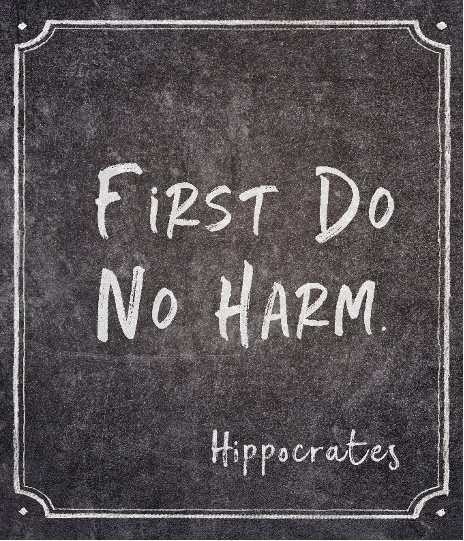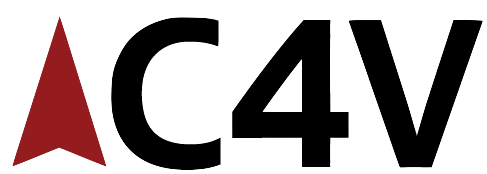Do No Harm

The medical profession in the West has relied on the Hippocratic Oath for roughly 2,500 years. Verbose at 183 words (in the 1923 Loeb edition), the Oath is frequently distilled to just four words: “First do no harm”.
This wise and important maxim is worthy of emulation. While not being a member of the medical profession, my many colleagues and I who are active in international relief and development work have widely adopted an even shorter version of that oath: “Do no harm.” We make no solemn pledges to this effect. Nor do we swear by Apollo Physician, Asclepius, Hygieia, Panaceia, or any of the gods and goddesses invoked in the Hippocratic Oath. For us, the exhortation simply exists as a form of general background guidance for the work that we do, and in our interactions with people whom we often immodestly refer to as our “beneficiaries”.
Relief and development people – practitioners, donors, program designers, evaluators, researchers, managers, trainers, advocates, students, scholars, and educators – are long overdue in giving this maxim more careful thought. Currently, the “do no harm” discourse among us is largely symbolic and seldom robust. Many of the harms that flow from our actions are beyond our capacity to discern – much less prevent.
At some level, however, we ought to recognize that we do share with our colleagues in the medical professions the awesome reality that our decisions – and the actions that follow from them – can lead to life-or-death consequences. Many relief and development practitioners will push back, asserting that such a possibility is unlikely to be a direct causal outcome of anything we do. Such assertions however demand a substantiation that is presently lacking. Allocating essential resources, commodities, opportunities, or protection within environments of scarcity and intense need is very much part of our job description. The possibility of being agents who unintentionally inflict actual harm exists, yet we are rarely expected to hoist the heavy burden of moral accountability to explain or justify our decisions except when factors of gross incompetence or perverse motivations (e.g., corruption) are glaringly apparent.
Our longstanding “moral accountability waiver” as international relief and development practitioners may account for the marked contrast evident in the plethora of medical ethicists who support and guide the medical profession’s decision-making, and the near total absence of such skilled advisors offering their insights and guidance to the practitioners within the international relief and development industry. As an industry, we get off relatively easy – but why? We ought not to escape accountability when so much is at stake.
Perhaps the closest example of a comparison between our two communities of do-no-harmers comes about when we each face the demands of triage – making what Guido Calabresi and Philip Bobbitt termed “tragic choices” (in their highly-acclaimed 1978 book of the same title). In crisis situations, when decision-makers confront issues of scarcity, great suffering (or impending threats of great yet preventable suffering) – all exacerbated by urgency – we reach out for a reasonably reliable prognosis of what benefits might flow from the optimal allocation of such scarce resources that are within our allocation and implementation mandates. We hope that such discernment is guided by careful ethical considerations, given that we are making trade-offs (with their participation sometimes, but certainly not always) under which people’s lives and well-being are at stake. In many instances, medical professionals know that their decisions will later be scrutinized, to establish that robust ethical discernment was in fact evident and was responsibly pursued. Within the standard-setters of their profession, no one is looking for physician-saints, but they do demand the more reasonably human satisfaction of knowing that the trade-offs, whether ultimately right or wrong (effective or ineffectual), were carefully and thoughtfully weighed and responsibly justified on a plausible moral basis.
Relief and development professionals seldom face such scrutiny, yet few seem curious at this omission. Yes, the moral equations and their unit of analysis do appear to be mismatched. The public demands that medical professionals do all within their power to save an individual patient’s life or cure their illness or affliction. Our expectations of relief and development professionals (and of the politicians and bureaucrats who set the resource levels available to them), however, are diluted by the scale at which we work – not one person/patient at a time but whole communities or even entire societies are our “target population”. Moral obligation is far less apparent or compelling when large groups of people become relegated to numbers, available only to be engaged at the level of points on a regression analysis or as impersonal data points in a spreadsheet.
Dealing at scale, however, does offer us an opportunity. The situations that we encounter in addressing poverty, conflict, poor governance, inequitable economies and the consequent lack of opportunities, structurally unfair trade relationships, exclusion and discrimination against marginalized groups (including the female half of humanity), and access to agency in personal decision-making are all situated within established – and often very problematic – paradigms. Notable examples of such paradigms include the patriarchy (and all the perversely gendered norms inherent in that ideology) that remains entrenched around the world; persistent colonial modes of exploitation and manipulation; rampant militarism and associated violence; the prioritization of short-term results that ignore the interests of youth and people not yet born (e.g., the climate crisis); largely rigid structures of socio-economic stratification based on caste, class, gender, ableism, heteronormativity, cisgenderism, or indigenous status; globalized criminal activities; terrorism; etc.
Who are we to change this?
Many of our relief and development programs and projects seek to contribute to such ambitious agendas, but we rarely have access to the resources necessary to facilitate change at the level of profound paradigm shifts unless it is measured incrementally over very long periods of time (where attribution of causation becomes impossibly complex and diffuse). Changing paradigms takes consensus on a transformational vision and the political will to see it through and sustain it. It also takes resources.
In a world of burgeoning inequalities, small numbers of immensely wealthy individuals hold command over economic resources far exceeding that of most countries. We have come to accept that scarcity is a given – even though we ought to recognize that it is a given only when the math that we use fails to take note of how morally perverse these vast inequalities are. Here in the United States, the disparities of wealth between the poor and the rich are more than in any other developed nation. Globally, the wealthiest 1 percent own 44 percent of the world’s wealth.
The concept of universal human dignity, and our commitment to its significance, provides a moral basis for drawing a red line on scarcity. As development professionals who confront poverty, suffering, and extreme inequalities on a daily basis, we ought to demand that the threshold of universal human dignity be respected if human dignity is to have any meaning as a normative and governance concept. Such a moral demand contains an explicit assertion that the paltry level of resources currently allocated by the powers-that-be within the status quo (exacerbated by the ignorance of many voters who are dismissive of moral obligations beyond national boundaries) is scandalous and impossible to justify on any credible moral basis.
Despite this moral fecklessness by Global North nation-states in their dealings with the Global South, and similar inexcusable negligence within the affluent private sector (where corporate social responsibility is often little more than a charade), our relief and development industry has been designed to work in a reactive mode within the limits of whatever few resources are allocated to it. As an industry, we fail to extend ourselves beyond such constraints. We do not advocate effectively within political and social spaces for a more equitable distribution of global resources in ways that would be truly responsive to, and transformative of, the paradigms that now lead to such immense levels of suffering, loss, inequality, indignity, and hopelessness.
Being facilitators of a better world is never easy. We regularly confront very powerful, very determined, and very well-resourced guardians of the status quo who stand resolutely in the way of change. We know from experience that whatever moral arguments we muster often fail to persuade them otherwise. The persistence of India’s rigid and enormously corrosive caste system is but one example, but as a 4,000-year-old affront to any credible notion of universal human dignity on a massive demographic scale, it is a significant one. And when it comes to facilitating the beneficial transformation of existing paradigms that are inequitable, inhumane, and undemocratic, our “do no harm” maxim takes on problematic dimensions. After all, our clear intent ought to be to disrupt the status quo whenever that reality is no longer just, fair, decent, or morally justifiable on any rational ethical basis. We are morally obliged to disrupt – and in a manner of speaking to “do harm” – to the interests of those who currently benefit the most from rejecting such change. Individuals whose interests benefit from paradigms of injustice are likely to push back mightily to our disruptive agenda.
Consider our efforts to curtail gender-based violence, which is a global pandemic that consistently attracts incommensurate attention and inadequate resolution. Those who benefit most from the subjugation and violence inflicted upon women and girls, and against all who are marginalized and vulnerable, will instead demand that respecting the privacy of the household and the sanctity of local cultural practices must take precedence even though such violence is most likely to occur inside those walls and within those debased cultural norms. Similarly, those who wield power in some nations will argue against respecting freedom of association and freedom of religion as human rights, arguing instead that their state-imposed national religion must always prevail. Picking-and-choosing among internationally respected human rights undercuts the very premise of a human right.
“Do no harm” only has power and meaning as a maxim when it is a component of a deeper, more sustained, and firmly institutionalized moral and ethical discourse within the relief and development industry. We are not there now. Exhortations to avoid harm are, at best, vague if well-intentioned statements of ideals, devoid of practical guidance.
We ought to do better. We must greatly improve our moral discernment capabilities and methodologies if we seek to avoid causing further unjustifiable harms. Failing to make progress in that direction, i.e., failing to cultivate and employ those discernment skills or to act on what they lead us to do, is doing harm.
The choice is clear. We ought not to perpetuate harmful paradigms and morally indefensible structures through our work. Instead, we carry an important moral obligation to become agents of change and defenders of universal human dignity. That redefinition of our role itself would constitute a paradigm shift of immense significance not only to what we do and what we aim to achieve, but to who we are.


